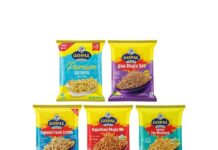
Two Sides – a global non-profit organization promoting the uniquely sustainable qualities of print and paper products and working to dispel common environmental misconceptions about the production and use of paper in its many forms – has reacted to an article in The Washington Times, in which the experts raised questions about paper-based packaging.
“The Washington Times recently featured an opinion piece by an advocate for the plastics industry that included multiple unsubstantiated environmental claims about paper-based packaging,” Two Sides North America said. Its president Kathi Rowzie submitted a letter to the editors in response.
“To the editors:
Why is it that whenever someone wants to extoll the sustainability benefits of plastic packaging products, they feel compelled to claim that plastics have “a lower environmental impact” than paper-based packaging (America succumbs to plastic paranoia, September 26) instead of simply making a fact-based environmental case? Could it be because paper products are the gold standard for circularity and true sustainability?
In this case, the author makes gratuitous claims that plastic packaging “helps the planet” and “saves tens of millions of trees every year,” citing “real scientists” from Sweden and Denmark to back up his claims of plastic’s green superiority. In doing so, he invites comparisons that, of necessity, must also catalog the environmental consequences of plastic packaging, from the extraction of finite resources and energy use to the fate of final products.
To start with, the many different resins used to make plastics are derived from non-renewable fossil fuels, namely natural gas, feedstocks derived from natural gas processing, and feedstocks derived from crude oil refining (U.S. Energy Information Administration). And single-use plastics also are incredibly energy-intensive to produce. In fact, plastic production accounts for more than 3% of total U.S. energy consumption, using roughly the same amount of oil as the global aviation industry, which in turn generates significant greenhouse gas (GHG) emissions (U.S. Department of Energy).
And while Americans toss millions of tons of plastic packaging into their recycling bins, not much of it actually gets recycled. A recycling PR campaign recently launched by the plastics industry says that 6 billion pounds (3 million tons) of plastic get recycled each year, but that’s only about 9% of the total plastic produced annually in the U.S. according to the U.S. Environmental Protection Agency (EPA). There are just too many different types of plastic, each with different recycling requirements, so they can’t be combined and recycled together. Building out the infrastructure to effectively collect, sort and recycle them poses extremely difficult logistical and economic challenges – challenges that are not likely to be met any time soon, if ever.
Given the finite resources and large amounts of fossil fuel energy used to produce them along with their low recycling rate, it’s a bit of a stretch to imply that plastics meet the generally accepted definition of circularity: industrial processes and economic activities that are 1) restorative or regenerative by design, 2) enable resources used to maintain their highest value for as long as possible, and 3) aim to eliminate waste through the superior design of materials, products and systems.
Paper-based packaging, on the other hand, has a demonstrably circular life cycle.
Paper-based packaging is manufactured using an infinitely renewable natural resource – trees that are purpose-grown, harvested and re-grown in sustainably managed forests. And it is manufactured in a process that uses mostly (64% on average in the U.S.) renewable bioenergy. This fact, combined with investments in energy efficiency and process improvements helped the U.S. paper industry reduce GHG emissions per ton of production by more than 24% since 2005. (American Forest and Paper Association, AF&PA). According to the EPA’s Greenhouse Gas Inventory, the pulp and paper industry is not a major contributor to climate change, contributing less than 0.6% of total U.S. CO2e emissions.
While all of these unique environmental characteristics make paper arguably one of the most sustainable products on earth, it’s the paper industry’s investment in recycling infrastructure that makes the paper life cycle truly circular. Over the past 30 years, the U.S. industry has voluntarily bankrolled billions of dollars in recycling infrastructure, including $7 billion in completed or announced investments between 2019 and 2025. Today, 94% of Americans have access to a community paper recycling program, and 79% have access to residential/curbside recycling programs, this according to a comprehensive national study commissioned by AF&PA in 2021.
Because paper recycling is accessible and easy, U.S. businesses and consumers have embraced it in a big way. With a recycling rate of 68% (~46 million tons annually), paper and paper-based packaging are the most recycled material in the U.S. municipal solid waste stream (EPA). And that rate jumps to nearly 94% for cardboard packaging (AF&PA),” wrote Kathi Rowzie.
What The Washington Times said
An article by The Washington Times on 7 June quoted Laszlo Horvath, an associate professor and director of the Center for Packaging and Unit Load Design at Virginia Tech.
“Paper, which is recyclable, is generally thought of as one of the most environmentally sustainable materials… But recycling paper is an extremely environmentally damaging process. It requires a lot of chemicals, it requires a lot of energy, a lot of water,” Horvath said in the article.
Another quote by Michael Shaver, director of the Sustainable Materials Innovation Hub at the University of Manchester, said in the same article, “Similar to plastic, it can be challenging to maintain the quality of paper after it’s been recycled.”
“Though a growing number of companies are finding more ways to use paper to package their products, experts say the material can fall short in some areas compared with plastic or aluminum. When it comes to packaging liquids, in particular, paper often isn’t a good alternative material, Horvath said in the article.
IndiFoodBev — authentic, impactful and influential
An English-language food and beverage processing and packaging industry B2B platform in print and web, IndiFoodBev is in its third year of publication. It is said that the Indian food and beverage industries represent approximately US$ 900 billion in revenues which implies more than 20% of the country’s GDP. Eliminating the wastage on the farmside can help to deliver more protein to a higher number of the population apart from generating sizable exports. The savings in soil, seeds, water, fertilizer, energy and ultimately food and nutrition could be the most immense contribution that country is poised to make to the moderation of climate change.
To improve your marketing and grow sales to the food and beverage processing and packaging industry, talk to us. Our research and consulting company IppStar [www.ippstar.org] can assess your potential and addressable markets in light of the competition. We can discuss marketing, communication, and sales strategies for market entry and growth.
Suppliers and service providers with a strategy and budget for targeted marketing can discuss using our hybrid print, web, video, and social media channels to create brand recognition linked to market relevance. Our technical writers are ready to meet you and your customers for content.
The second largest producer of fruit and vegetables in the world is continuously expanding processing capacities and delivery systems with appropriate innovative technologies. We cover product and consumer trends, nutrition, processing, research, equipment and packaging from farm to thali. Get our 2025 media kit and recalibrate your role in this dynamic market. Enhance your visibility and relevance to existing markets and turn potential customers into conversations. Ask for a sample copy of our bi-monthly in print or our weekly IndiFoodBev eZine each Wednesday.
For editorial info@ippgroup.in — for advertisement ads1@ippgroup.in and for subscriptions subscription@ippgroup.in
Naresh Khanna – 10 February 2025
Subscribe Now










